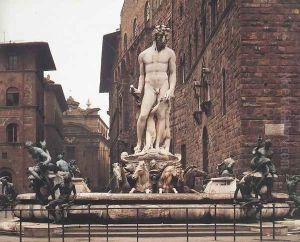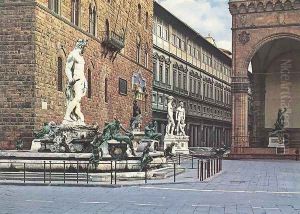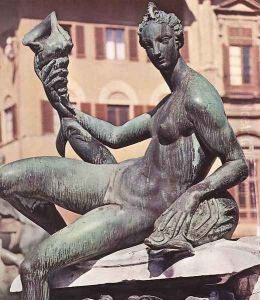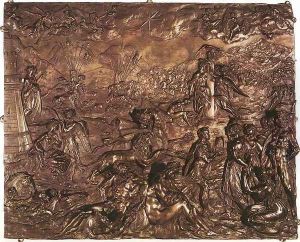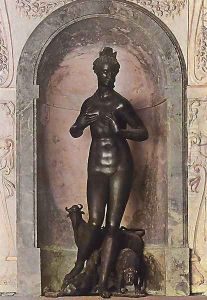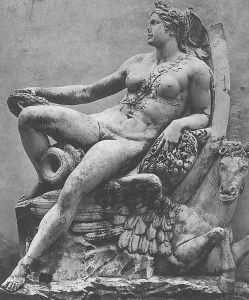Bartolomeo Ammanati Paintings
Bartolomeo Ammanati was an Italian architect and sculptor who played a significant role in the Italian Renaissance. He was born in Settignano, near Florence, and began his artistic training at a young age. His early work was influenced by the sculptor Baccio Bandinelli and the architect Jacopo Sansovino, with whom he worked in Rome and later in Venice.
Ammanati is known for his work in both sculpture and architecture, merging the elegance of the Renaissance with a more mannerist style that became popular in the late 16th century. One of his most famous sculptures is the Fountain of Neptune located in the Piazza della Signoria in Florence, which he completed in the mid-1560s. This work exemplifies his skill in creating dynamic compositions with figures that exhibit a sense of movement and energy.
As an architect, Ammanati's work includes the design and construction of the Pitti Palace's courtyard, the Palazzo dell'Uffizi in Florence, and the bridge Ponte Santa Trinita, which was later destroyed and rebuilt. His architectural style is noted for its harmonious proportions and the integration of classical elements with innovative space planning.
Ammanati's contributions to the Renaissance were significant, and his works remain a testament to his ability to blend sculpture and architecture. His influence extended beyond his lifetime, impacting future generations of artists and architects. He died in Florence, and his legacy continues through his enduring works that still attract admiration and study by art enthusiasts and scholars around the world.
